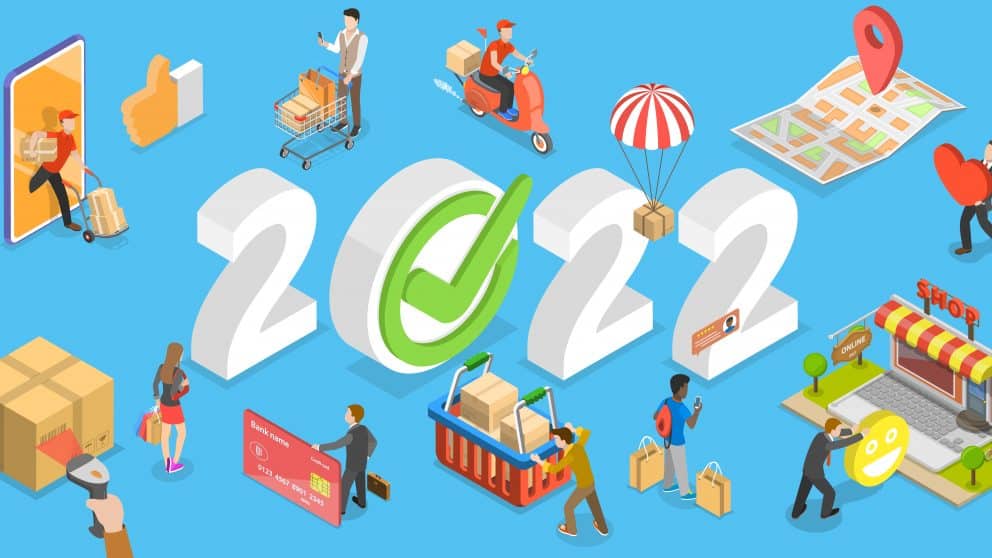Ecommerce business is one of the most successful businesses to start in 2022. And this isn’t a surprise at all.
The pandemic helped a lot of people see the importance of ecommerce businesses. That was due to the reluctance of many customers to leave the safety of their homes to shop. Very understandable.
Now the lockdown has been lifted; customers still don’t want to shop at brick-and-mortar stores. They’ve realized the convenience of shopping from home, and we don’t think they’re going back from that any time soon.
That’s actually a good thing all around. The consumers get their convenience and safety. And, it has given a lot of businesses the motivation to expand on their Ecommerce capabilities.
It’s the year 2022, and thanks to some events from 2021, we are sure to see some new developments this year. Ecommerce is expanding every year, and as a business owner, it’s your job to keep abreast of the trends and leverage them to benefit your business.
We’ve created a list to help you keep track of those. Without further ado, here are a few ecommerce trends 2022 has in store for us.

Some Ecommerce Trends To Look Out For In 2022.
-
Conversion Rate Optimization.
Many visitors to your ecommerce site are random people scrolling through the internet. Most of the time, they won’t buy anything.
The trick to a successful online business is turning those casual visitors into paying customers. You can do that by optimizing your conversion rate.
Conversion rate optimization isn’t a new thing, but it’s sure to be big in 2022. With ecommerce taking a more significant percentage of sales, every business would want to tap into that pool.
-
Zero-party data collection.
Third-party data collection is one tool that has been beneficial to ecommerce businesses. Platforms like Facebook and many websites collect data from internet users and use it for targeted advertising.
Sure, it has been really profitable for advertisers, but it did raise a lot of privacy concerns. And due to the pushback from users, it is slowly coming to an end.
It started with Apple making data tracking optional on their devices, but even website cookies will be gone by 2024. With all that in the future, ecommerce brands are turning to zero-party data collection.
That is where the business collects data from their customers without the help of advertising companies. It is one of the most important ecommerce trends 2022 will bring.
Some zero-party data collection tools your website can use include quizzes, chatbots, and conversational pop-ups. You can get in on the trend as quickly as possible.
-
Live Shopping On The Rise.
Thanks to the internet, live streaming, and our dear social media influencers, we can expect a return of live shopping.
Live Shopping is a system where products are showcased live on-air and sold simultaneously. Just like QVC has been doing.
Consumers have been getting goods from recommendations from Influencers for a while now. But we’re going to see sales from live streams increase in 2022 as brands tap more heavily into this resource.
If you don’t have a social media audience, your business could benefit from a partnership with an influencer.
-
Mobile Commerce Optimization.
The Ecommerce trends 2022 will bring are many, but mobile commerce optimization is another important one.
Many ecommerce businesses aren’t optimized for mobile users. Some are still limited to a website-based existence that may not look so good in mobile view. That isn’t a problem with a site from Sellvia, though.
In 2021, mobile users accounted for 64% of the log-in sessions for major ecommerce sites. Yet only 2.2% of that number actually bought some products.
Optimizing mobile commerce would significantly increase sales, and brands know that. SMS marketing and other mobile targeted sales campaigns would rise this year.
-
Web3, NFTs And The World Of Crypto.
2021 saw the rise of NFTs and Web3. These two concepts will be among the Ecommerce trends 2022 will bring.
Many people don’t really understand what they are, so we’ll give a brief explanation.
Web3 is an internet service system that stores information in blockchains and is decentralized. NFTs or Non-Fungible Tokens are digital assets that cannot be duplicated. They could be anything from art to video clips.
With brands like Nike diving into NFTs and Web3, we can be sure many other businesses will follow. Cryptocurrencies would be accepted in more ecommerce sites, too.
Should your business experiment with these? If you aren’t well-versed in them, you probably shouldn’t. But you could always get yourself educated or wait till you learn from people’s mistakes.

-
Environmental Sustainability.
Consumers have become more interested in the practices of the brands they patronize. Most times, eco-friendly brands are rewarded with more patronage and customer loyalty.
Many brands have noticed this and are taking steps in that direction.
Many businesses are now shying away from plastics in their shipping. Some have included information on how to recycle their materials in their packages. And others have gone as far as using only recycled materials.
Your business could incorporate some of these practices into its production process. Some donations to organizations that focus on sustainability could also help.
-
Improvements to the supply chain.
Thanks to the increased demand for deliveries, businesses are making their supply lines more efficient. That won’t stop this year.
Reverse logistics and same-day delivery are already getting a lot of attention. We expect that to increase.
Dropshippers with Sellvia can rest easy; they’ve still got everything under control. But if your business’s supply lines were struggling in 2021, you should consider making improvements. Or you could let Sellvia boost your store.
They offer trendy lower-priced products and speedy delivery all around the US. They can take care of your deliveries and leave you to focus on other vital areas. All they charge is $39 monthly after a two-week free trial.
Getting in on some of these trends could help your business reach more customers this 2022.